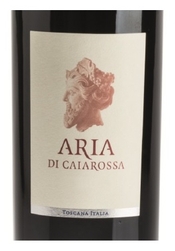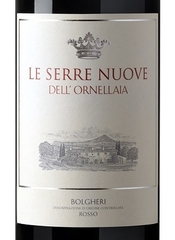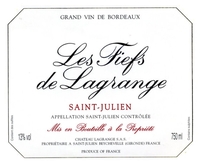Nevertheless, a recent instance of serendipity reinforced why I maintain that consumers should be embracing second wines, not shunning them. But before describing the serendipitous encounter, let me remind readers about second wines.
Though second wines are mostly associated with Bordeaux, they are found all over the world, and in many instances aren’t even called a “second wine.” Regardless of labeling or nomenclature, the concept is the same: categorize the grapes and/or wine from a property based on quality and character, and bottle them separately on two tiers. It’s easy to understand that not all parts of a vineyard will produce the same high-quality grapes because the soil and exposure of the vines are not uniform. Furthermore, the age of the vines has an enormous influence on the grape quality, and since growers replant their vines periodically, vineyards will contain plants of differing ages. So, you can understand why producers might opt to keep grapes from older vines that produce higher quality fruit separate, relegating fruit from young vines to the second wine. In appellations where blending of varieties is allowed, another important factor will be how each variety performed that year. The late Paul Pontallier, the long-term director at Château Margaux, once told me that he diverted a substantial amount of grand vin-quality Merlot into their second wine, Pavillon Rouge, in 2005 because putting all the Merlot, even though it was of the highest quality, into the Grand Vin (1st wine) would upset its balance.
In a forgotten corner of my cellar, I recently discovered a bottle of 2013  of Aria di Caiarossa lying next to a bottle of its big brother, 2013 Caiarossa. Owned and managed by the same team that owns the famous Margaux Grand Cru Classé Château Giscours in the Margaux appellation of the Médoc, Caiarossa is a unique “Super Tuscan” that includes Rhône varieties and Alicante in addition to the more traditional Bordeaux grapes. Here was a great opportunity to see how Caiarossa, the 1st wine, and Aria de Caiarossa, the 2nd wine, had evolved over a decade.
of Aria di Caiarossa lying next to a bottle of its big brother, 2013 Caiarossa. Owned and managed by the same team that owns the famous Margaux Grand Cru Classé Château Giscours in the Margaux appellation of the Médoc, Caiarossa is a unique “Super Tuscan” that includes Rhône varieties and Alicante in addition to the more traditional Bordeaux grapes. Here was a great opportunity to see how Caiarossa, the 1st wine, and Aria de Caiarossa, the 2nd wine, had evolved over a decade.
The graceful 2013 Aria di Caiarossa, an IGT Toscana blended from Cabernet Franc, Merlot, Syrah, and Cabernet Sauvignon, has evolved extremely well into a finesse-filled beauty. Weighing in at a modest 13.5 percent stated alcohol, it now wows you with a Bordeaux-like complexity, poise, and elegance. Mild tannins lend needed support while Tuscan acidity keeps it fresh and delightful to drink. Its graceful and suave texture can remind us why we age wines. By contrast, the more youthful 2013 Caiarossa, also an IGT Toscana, is bolder (14.0 percent stated alcohol) with a tarry minerality, perhaps in part because of the addition of Sangiovese, Alicante, and Petit Verdot to the blend. Still a pleasure to drink, its youthful vigor and tannins just gave it a more robust profile. To my taste, the Aria is at a perfect stage, whereas the Caiarossa, the 1st wine, unsurprisingly, still needs another five to 10 years to mellow.
Alessandro Lunardi, the U.S. representative for Ornellaia, explains that  all their vineyards are farmed with the same attention to detail, with the potential for any of the grapes to go into the first wine. It’s only after tasting the wines from the 100+ separate plots that the team decides which ones will go into Ornellaia and which go into Le Serre Nuove dell’Ornellaia, their second wine. Lunardi points out that sometimes even grapes from young vines wind up in Ornellaia. Le Serre Nuove is typically Merlot-dominant in contrast to the Cabernet Sauvignon-dominant Ornellaia, which helps explain why it is more approachable when young. The fleshy and accessible 2021 Le Serra Nuove dell’Ornellaia combines alluring savory and mineral notes, all wrapped in suave tannins. It’s a joy to drink now (93 pts., $75). In contrast, the far more youthful, though chronologically older, 2020 Ornellaia, a spectacularly beautiful and balanced young wine, needs at least a decade for its true grandeur and complexity to show (96 pts., $250). For what it delivers, Le Serra Nuove dell’Ornellaia is a bargain, especially compared to Ornellaia.
all their vineyards are farmed with the same attention to detail, with the potential for any of the grapes to go into the first wine. It’s only after tasting the wines from the 100+ separate plots that the team decides which ones will go into Ornellaia and which go into Le Serre Nuove dell’Ornellaia, their second wine. Lunardi points out that sometimes even grapes from young vines wind up in Ornellaia. Le Serre Nuove is typically Merlot-dominant in contrast to the Cabernet Sauvignon-dominant Ornellaia, which helps explain why it is more approachable when young. The fleshy and accessible 2021 Le Serra Nuove dell’Ornellaia combines alluring savory and mineral notes, all wrapped in suave tannins. It’s a joy to drink now (93 pts., $75). In contrast, the far more youthful, though chronologically older, 2020 Ornellaia, a spectacularly beautiful and balanced young wine, needs at least a decade for its true grandeur and complexity to show (96 pts., $250). For what it delivers, Le Serra Nuove dell’Ornellaia is a bargain, especially compared to Ornellaia.
Marcel Ducasse, the brilliant winemaker and general manager that  Suntory hired when they purchased Château Lagrange, a Third Classified Growth in the 1855 Médoc Classification in 1983, once told me that the fastest way to improve the quality of a wine was to make a second wine. Which is exactly what he did and why the quality of Château Lagrange soared after Suntory’s purchase. Unusually for a Bordeaux Cru Classé, Château Lagrange actually bottles more second wine than Grand Vin. In addition to elevating Château Lagrange virtually overnight to a place among the leading estates in St. Julien, the creation of the second wine, Les Fiefs de Lagrange, has been a boon for consumers. Take the succulent 2016 Les Fiefs. At seven years of age—and still available in retail shops—its lush, black current-like fruit balanced by fine tannins and enlivening acidity makes it a fine choice for current drinking with a steak (92 pts., $46). By contrast, the monumental 2016 Château Lagrange, one of Lagrange’s best efforts, is a harmonious treasure but needs another decade of cellaring to show its full charms (96 pts., $75). With a more velvety texture—think cashmere versus lambswool—and more complexity, it’s unquestionably the better wine, but for drinking tonight, I’d uncork the ’16 Les Fiefs.
Suntory hired when they purchased Château Lagrange, a Third Classified Growth in the 1855 Médoc Classification in 1983, once told me that the fastest way to improve the quality of a wine was to make a second wine. Which is exactly what he did and why the quality of Château Lagrange soared after Suntory’s purchase. Unusually for a Bordeaux Cru Classé, Château Lagrange actually bottles more second wine than Grand Vin. In addition to elevating Château Lagrange virtually overnight to a place among the leading estates in St. Julien, the creation of the second wine, Les Fiefs de Lagrange, has been a boon for consumers. Take the succulent 2016 Les Fiefs. At seven years of age—and still available in retail shops—its lush, black current-like fruit balanced by fine tannins and enlivening acidity makes it a fine choice for current drinking with a steak (92 pts., $46). By contrast, the monumental 2016 Château Lagrange, one of Lagrange’s best efforts, is a harmonious treasure but needs another decade of cellaring to show its full charms (96 pts., $75). With a more velvety texture—think cashmere versus lambswool—and more complexity, it’s unquestionably the better wine, but for drinking tonight, I’d uncork the ’16 Les Fiefs.
So, my advice is to embrace those “first losers.”
E-mail me your thoughts about second wines at [email protected] and follow me on Twitter and Instagram @MichaelApstein.
September 20, 2023
